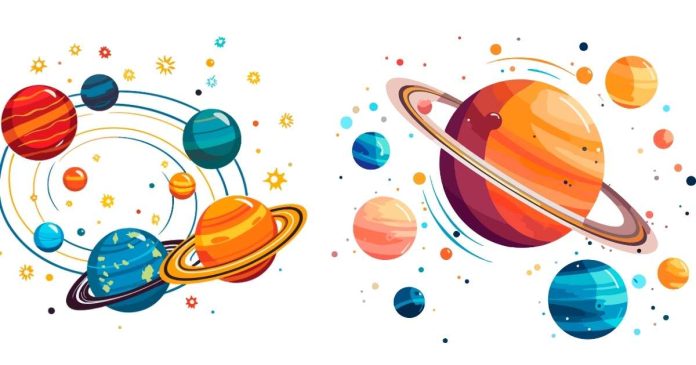Capella, one of the brightest stars in the night sky, has fascinated astronomers and stargazers alike for centuries. Located about 42.2 light-years away in the constellation of Auriga, Capella is a binary star system composed of two giant stars, Capella A and Capella B. But one question that often arises is whether this stellar system has any planets orbiting around it. In this blog post, we’ll explore the possibility of planets surrounding Capella and the fascinating dynamics of this distant star system.
Understanding Capella: A Binary Star System
Before delving into the question of planets, let’s first understand the nature of Capella. Capella is not a single star, but rather a binary system made up of two giant stars:
- Capella A is a yellow giant star about 2.5 times the mass of the Sun. It is much older than the Sun and has expanded beyond the main sequence phase of its life cycle.
- Capella B is a smaller, orange giant that orbits Capella A at a distance of about 0.7 astronomical units (AU), which is roughly 70% the distance between Earth and the Sun.
These two stars are relatively close to each other, orbiting a common center of mass in a relatively tight orbit. Together, they dominate the Capella system.
The Search for Planets Around Capella
So, does Capella have planets surrounding it? As of now, there are no confirmed planets orbiting Capella A or Capella B. However, this doesn’t mean planets couldn’t exist in the system — it just means that none have been detected yet. The search for exoplanets around stars like Capella involves detecting subtle changes in the star’s motion, light, or radiation, which can indicate the presence of a planet.
Why Might Capella Not Have Planets?
While it’s possible that planets could exist around Capella, there are a few factors that might make planet formation in this system less likely:
- Age and Evolution: Both Capella A and Capella B are evolved stars, meaning they are no longer in the prime stages of stellar fusion, like our Sun. As stars age, they expand and lose mass through powerful stellar winds, which could potentially strip away any nearby planetary material or prevent the formation of new planets. Capella’s age (approximately 600 million years) is much younger than the Sun, but still, the stars’ evolution could make planet formation less likely.
- Binary Dynamics: The two stars in the Capella system are relatively close to each other. Binary star systems can create dynamic environments that could destabilize planetary orbits, making it difficult for planets to remain in stable positions. The gravitational interactions between the two stars might disrupt the formation or stability of planets, especially if they are within the region where the stars exert significant influence.
- Stellar Activity: Like other stars, Capella A and B likely emit strong stellar winds and radiation. The intense radiation from these stars could make it challenging for planets to form or survive in close orbits, as the planets could be stripped of their atmospheres or face extreme radiation environments.
Could Planets Exist Further Away?
Despite these challenges, it’s still possible that planets could exist in the outer regions of the Capella system, far from the influence of the stars’ radiation and winds. In fact, many planetary systems around distant stars are found to have planets in wide orbits, sometimes hundreds of times farther away than Earth is from the Sun. These distant planets may be harder to detect, but they could theoretically exist, possibly in a more stable environment.
One possibility is that a planet could exist around Capella in the so-called “habitable zone” — the region where liquid water could exist on a planet’s surface — but this would depend on various factors, such as the amount of radiation and stellar activity. With current technology, it’s difficult to detect planets in these distant, potentially habitable zones, so we’ll have to wait for further advancements in astronomical techniques to explore this possibility.
The Future of Planet Detection in Binary Systems
As technology improves, astronomers are developing better tools to detect exoplanets in binary systems like Capella. Methods such as the transit method (detecting dips in light as a planet passes in front of its host star) and radial velocity (detecting the small wobbles of a star caused by the gravitational pull of orbiting planets) are continuously being refined. With these techniques, we may one day discover if planets do exist around Capella or its components.
Conclusion
While no planets have been discovered orbiting Capella, the possibility remains open, especially in the outer reaches of the system. However, the dynamics of a binary star system and the advanced evolutionary stage of the stars make planet formation and survival more challenging. As astronomical technology progresses, we may eventually uncover more about the distant and fascinating Capella system. Until then, Capella remains one of the brightest and most intriguing stars in the sky, and we continue to wonder if it might one day be home to distant planets — or if it ever was.
Keep watching the stars — the universe always has more secrets waiting to be uncovered!


